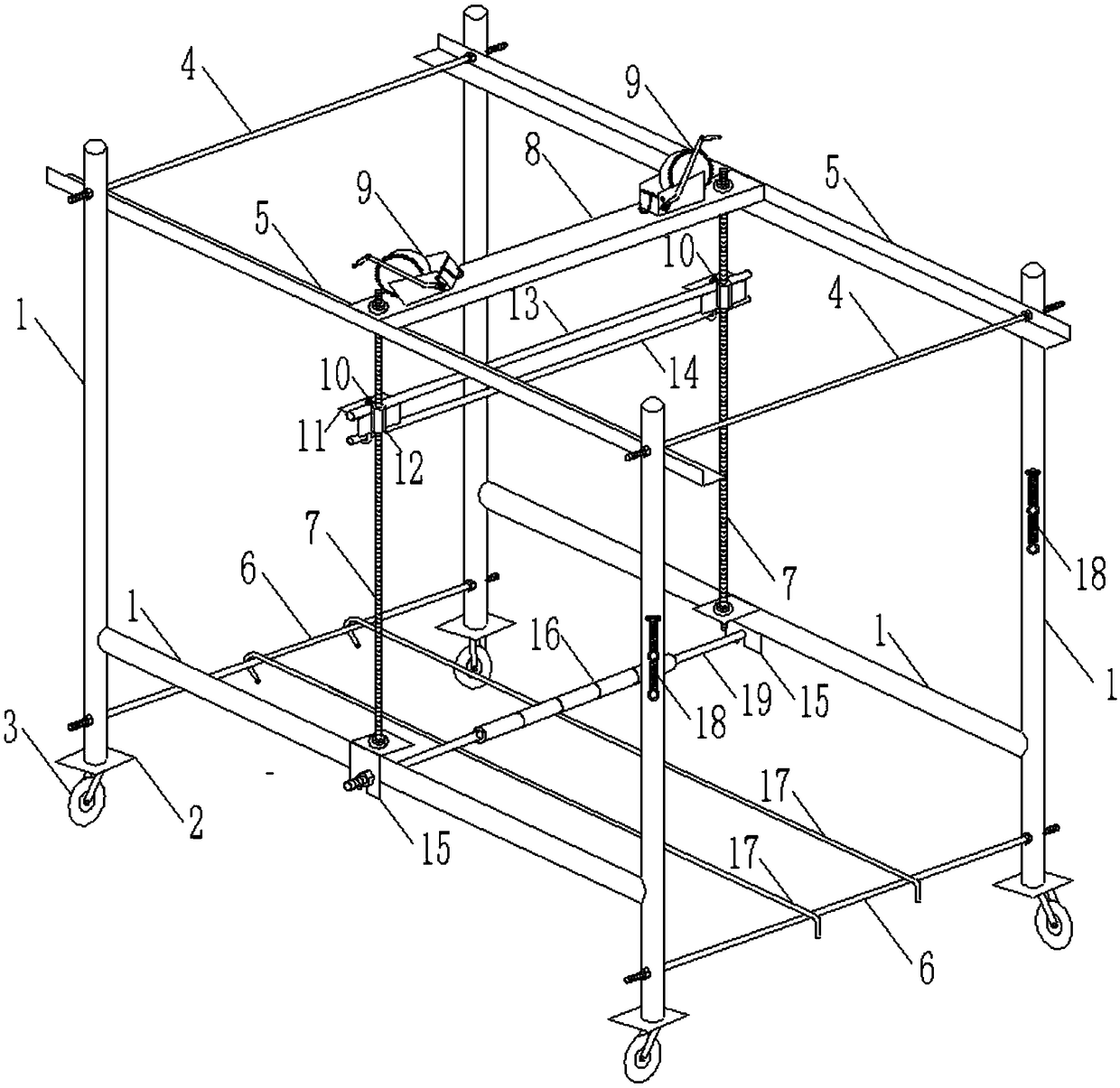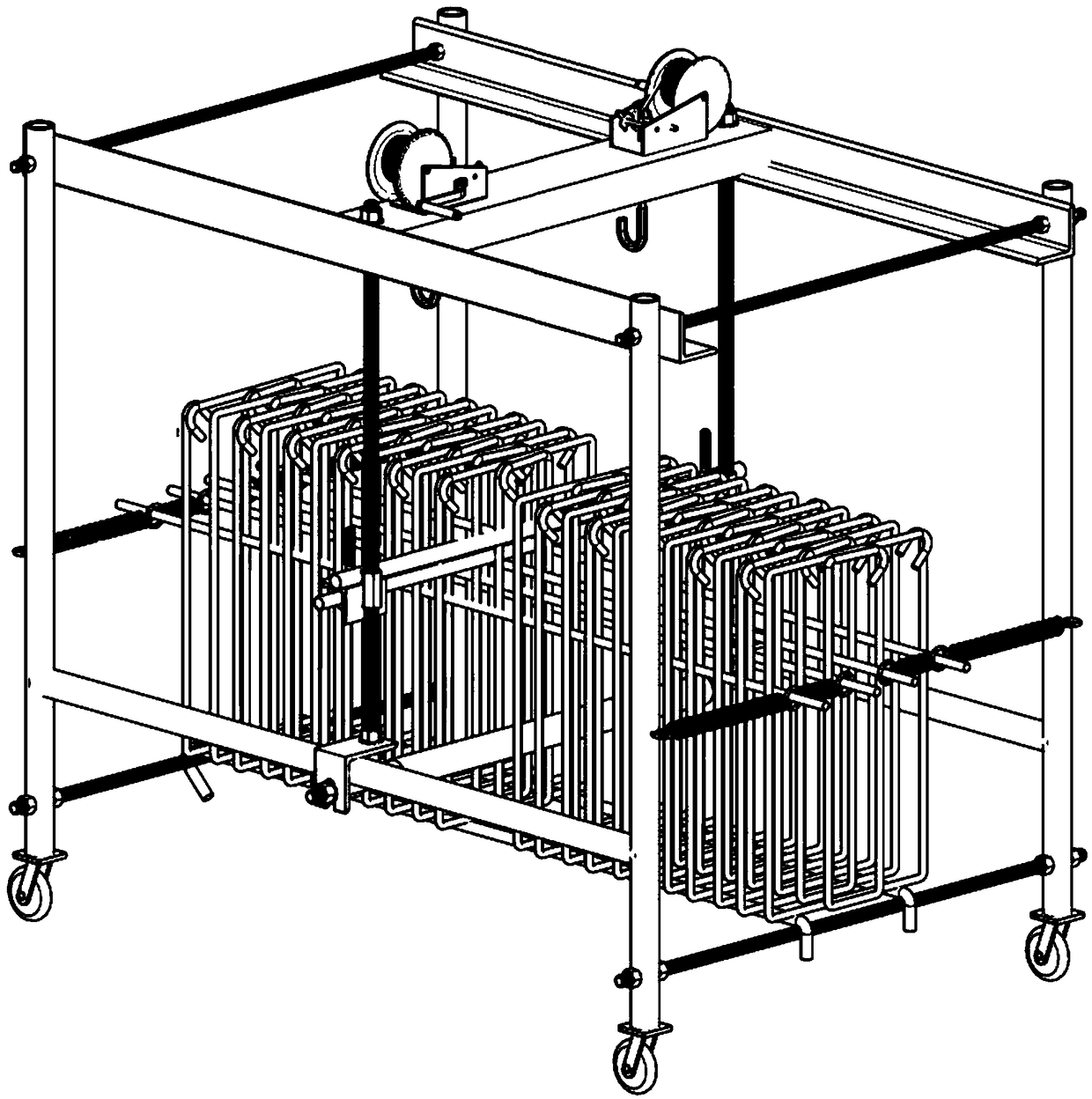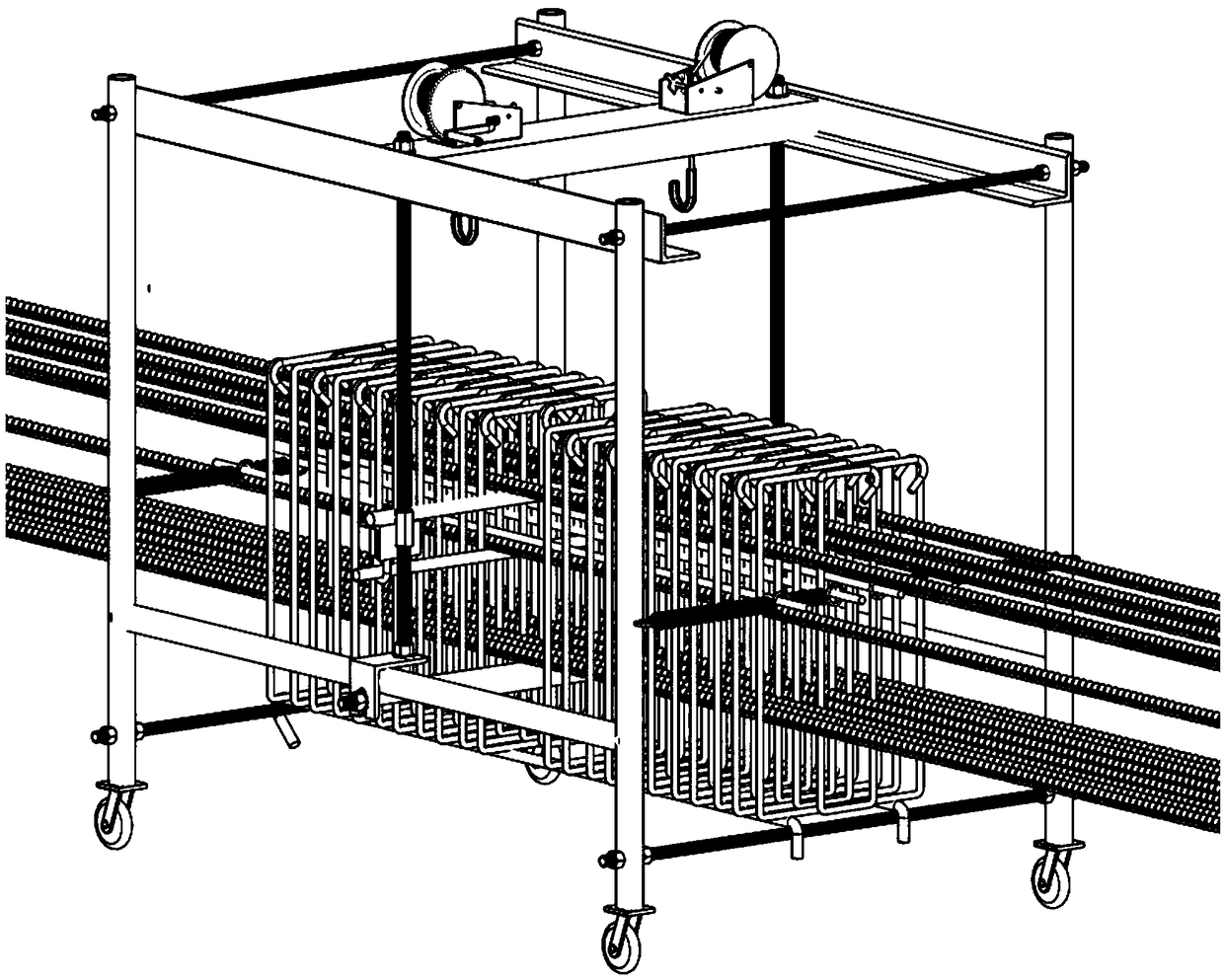Cast-in-place beam reinforcement cage binding installation multi-function trolley
A technology of steel cages and cast-in-place beams, which is used in construction, building structure, and building materials processing, etc., can solve the problems of difficult adjustment of steel bars, increased labor input, inconvenient movement, etc., and saves human resources and auxiliary materials. , Reduce labor intensity and ensure the effect of installation quality
- Summary
- Abstract
- Description
- Claims
- Application Information
AI Technical Summary
Problems solved by technology
Method used
Image
Examples
Embodiment Construction
[0032] The following will clearly and completely describe the technical solutions in the embodiments of the present invention with reference to the accompanying drawings in the embodiments of the present invention. Obviously, the described embodiments are only some, not all, embodiments of the present invention. All other embodiments obtained by persons of ordinary skill in the art based on the embodiments of the present invention belong to the protection scope of the present invention.
[0033] Such as Figure 1-4 As shown, according to the embodiment of the present invention, a cast-in-place beam reinforcement cage binding and installation multifunctional trolley includes a rectangular tubular vehicle body frame extending along the front and rear directions, and the openings at the front and rear ends of the vehicle body frame are connected with the reinforcement cage hoops. Corresponding to the ribs, the first cross brace 13, the second cross brace 14 and the third cross br...
PUM
 Login to View More
Login to View More Abstract
Description
Claims
Application Information
 Login to View More
Login to View More - R&D
- Intellectual Property
- Life Sciences
- Materials
- Tech Scout
- Unparalleled Data Quality
- Higher Quality Content
- 60% Fewer Hallucinations
Browse by: Latest US Patents, China's latest patents, Technical Efficacy Thesaurus, Application Domain, Technology Topic, Popular Technical Reports.
© 2025 PatSnap. All rights reserved.Legal|Privacy policy|Modern Slavery Act Transparency Statement|Sitemap|About US| Contact US: help@patsnap.com



